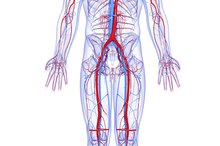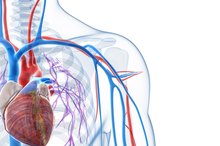Parts of the Lungs
The lungs are organs responsible for gas exchange. When you inhale, air rushes into the lungs and sends oxygen to the blood; the lungs are also the path for removal of carbon dioxide. The lungs are an integral part of the body, and the oxygen provided by the lungs facilitates life. Knowing the parts of the lungs helps patients understand why it's important to keep them healthy.
Trachea
The trachea, also called the windpipe, is the main airway passage that takes air to the lungs. The trachea, which is connected at the nose and mouth, is a bony, hollow tube in the front of the neck. This tube continues down the chest where it branches to the left and right lung.
Lobes
Characteristics of Healthy Lungs
Learn More
The lungs are sectioned in lobes. The right lung is larger than the left, so it has more lobes. The right lung has three lobes, while the left lung only has two lobes. The left lung is smaller to compensate for the space taken by the heart. The heart rests between the right and left lung but is situated more on the left.
Bronchioles
Bronchioles are structures that branch in the lungs. The bronchioles connect on one side at the trachea and terminate at the alveoli. The bronchioles carry the air to the alveoli, where gas exchange occurs. They are also the first step after the alveoli in bringing carbon dioxide out of the lungs when you exhale.
Alveoli
How Do the Walls of the Atria & Ventricles Differ?
Learn More
The alveoli are tiny sacs responsible for gas exchange. These sacs hold air, but they are also surrounded by capillaries. The capillaries have a tiny wall and are filled with blood. The alveoli supply the blood with the oxygen that is inhaled. When you exhale, the blood exchanges carbon dioxide for oxygen. The carbon dioxide is then removed from the body.
Diaphragm
The diaphragm is the muscle responsible for inflating and expanding the lungs. When your inhale, the diaphragm muscle contracts and presses the bottom parts of the left and right lung, causing the lungs to inflate. When you exhale, the diaphragm relaxes and the lungs are returned to their original shape.
Related Articles
References
Writer Bio
Lysis is the pen name for a former computer programmer and network administrator who now studies biochemistry and biology while ghostwriting for clients. She currently studies health, medicine and autoimmune disorders. Lysis is currently pursuing a Ph.D. in genetic engineering.









